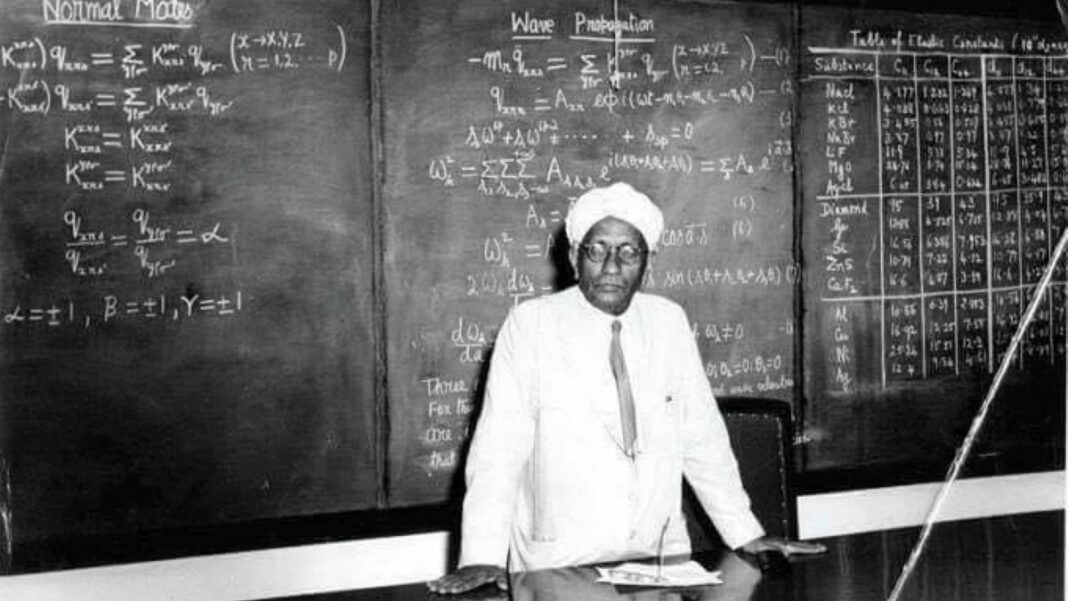INDIA: Today marks the 95th anniversary of a groundbreaking scientific discovery: the Raman Effect by Indian physicist Sir Chandrasekhara Venkata Raman.
On February 28, 1928, Sir Chandrasekhara Venkata Raman, more commonly known as CV Raman, discovered the phenomenon that would later bear his name.
The Raman Effect is a scientific principle that explains how light interacts with matter. It involves the scattering of light by molecules, which causes a shift in its frequency.
The Raman Effect results from the inelastic scattering of light by molecules, meaning that the photons in the light beam lose or gain energy as they interact with the molecules.
At the time of his discovery, CV Raman worked at the Indian Association for the Cultivation of Science in Kolkata.
He was studying how light interacts with matter and using it to understand the composition of various materials.
While experimenting with a beam of light, he noticed that some of the photons scattered at a different frequency than the original light beam.
This difference in frequency is known as the Raman shift.
The vibration of molecules in the material that the light interacts with causes the Raman shift.
CV Raman’s discovery had a profound impact on the scientific community immediately, leading to a new field of study called Raman spectroscopy.
CV Raman spectroscopy uses the Raman Effect to analyse the composition of materials, including chemicals, drugs, and even biological tissues.
The Raman Effect has also found applications in various fields, such as medicine, forensic science, and nanotechnology.
Raman’s discovery was also significant because it provided evidence for the wave-particle duality of light.
The wave-particle duality principle suggests that light can act as both a wave and a particle, depending on the situation. Raman’s discovery showed that light could interact with matter on a particle level, leading to the scattering of photons and the Raman shift.
Raman was awarded the Nobel Prize in Physics in 1930 for his discovery.
He was the first Asian to receive the prize in any category and remains the only Indian to receive the Nobel Prize in Physics.
His discovery continues to inspire new research and applications in various fields.
As we celebrate the 93rd anniversary of the Raman Effect, it is crucial to recognise the impact of CV Raman’s discovery on the scientific community.
Raman’s work has revolutionised the way we study and understand the world around us, and his legacy continues to inspire new generations of scientists.
The Raman Effect serves as a reminder of the power of scientific discovery and the importance of investing in research and education.
It is also a testament to the perseverance and dedication of scientists like CV Raman, who pursued their passion for knowledge and made significant contributions to our understanding of the universe.
As we reflect on Raman’s discovery and its impact, we should also celebrate the spirit of scientific inquiry that continues to drive innovation and progress.
With continued investment in research and education, we can build on Raman’s legacy and make even bigger strides in our understanding of the world around us.
Also Read: Indian Astronomers Make Headlines with Major Variable Star Discovery in NGC 381



